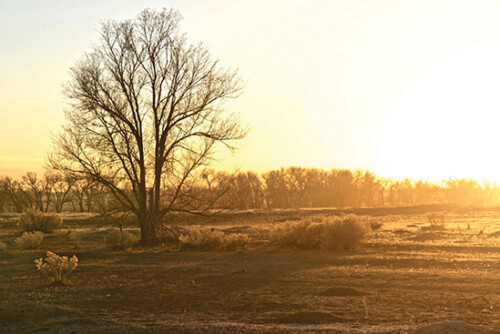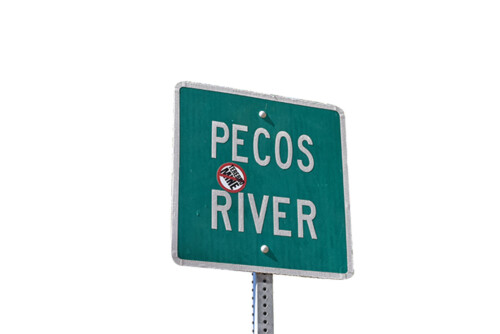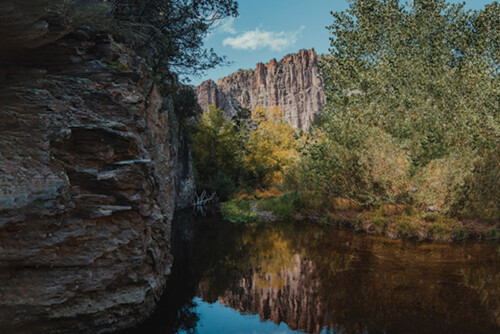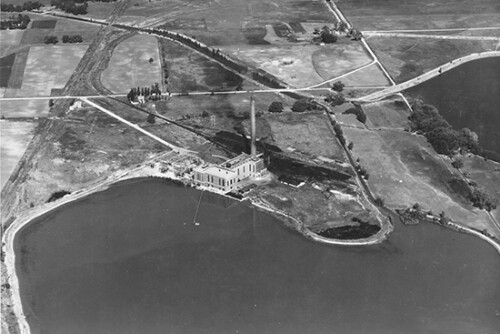The Colorado River is an essential water source for more than 40 million people, 5.5 million acres of agriculture, and the vibrant wildlife along its course through the Southwest.
When you turn on your tap at home, it’s hard to imagine the thousands of important—and at times contentious—decisions made about that water before it gets to your glass. But from the snowcapped Rocky Mountains down through the Arizona desert, every drop of water in the Colorado River is subject to a labyrinth of legal considerations. Water providers, municipalities, states, tribes, and other entities collaborate, negotiate, and litigate to safeguard their share of the river. The river is so coveted and overused that it runs dry before it reaches its historic delta in the Gulf of California.
While state water laws date back to the mid-19th century, the interstate management of the Colorado River hit a major milestone 100 years ago, with the 1922 Colorado River Compact, which divvied up the river between 7 southwestern states and provided the framework for how the river is governed to this day.
However, the realities of the river have evolved since then. In 2007, the Colorado River Basin states negotiated a set of guidelines to update how we manage this vital resource. Those Interim Guidelines modernized the way the river is managed and how states cooperate on the hardest-working river in the West. For the past 14 years, the Interim Guidelines have coordinated water releases from Lake Powell and Lake Mead to provide more certainty for water users and avoid mandatory curtailments and conflicts among Upper and Lower Basin states. But the guidelines lacked important provisions speaking to river health.
The guidelines are set to expire in 2026, providing a rare and historic opportunity to protect the Colorado River for future generations. Cities, communities, industries, and agriculture interests, among others, will be vying to protect their share of the river’s water. WRA and our partners will work to ensure the river and its ecosystems are protected for the long-term health of our region and for future generations.
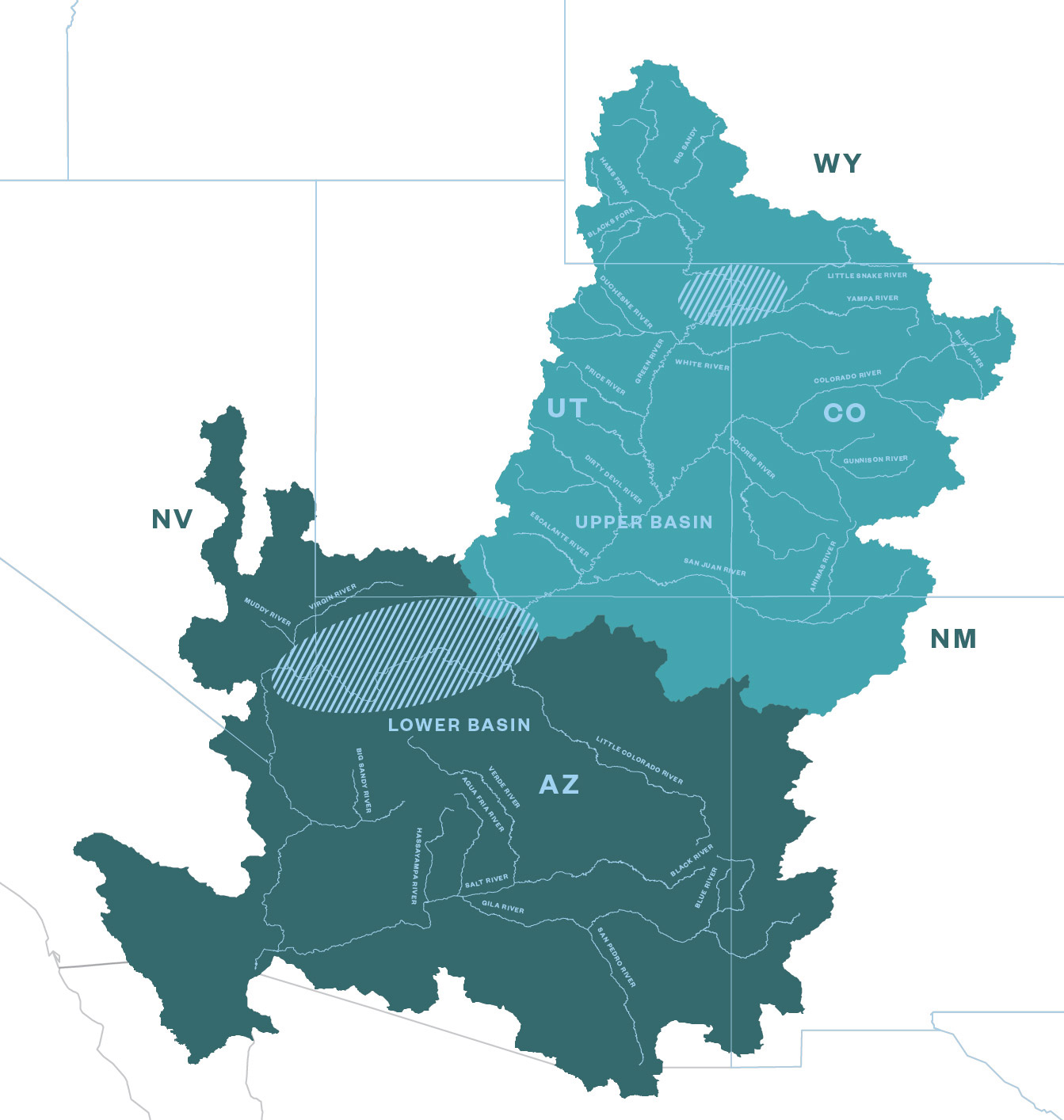

Upper Colorado River Endangered Fish
WRA has worked for years to protect river flows and other habitat that supports the four endangered fish species native to the Colorado River through our work with the Upper Colorado River Endangered Fish Recovery Program. By ensuring there is enough water in the river at key locations during crucial times, we can support the survival of those species for future generations. WRA will continue to advocate for their protection in the upcoming negotiations.
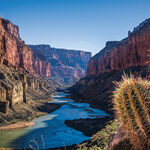
Grand Canyon
The Grand Canyon is best known for its world-renowned geology, immense landscapes, and roaring rapids on the Colorado River. But the 277-mile-long stretch of winding river through the Grand Canyon also provides important riparian habitat for aquatic wildlife and native fish species. Located between two of the largest dams on the Colorado River, the health of the riparian habitat in
the Grand Canyon is easily impacted by even the slightest changes in climate and water management practices. The negotiations will be an opportunity to restore crucial habitat in the canyon.
The renegotiations are coming as the impacts of climate change are increasingly being felt throughout the Basin and as scientists say that hotter and drier is our new normal. It is a pivotal moment for Upper and Lower Basin states alike to start planning for a future with less water in the Colorado River.
Increased temperatures and the lasting impacts of drought mean that the near average levels of snowpack in the past few years have resulted in below average flows in the Colorado River. Indeed, the Lower Basin is likely to face its first ever “tier-one” shortage next year. That would trigger cutbacks on water use in Arizona, Nevada, and Mexico, primarily to agricultural producers. It would also force municipal water managers and communities to focus even more on conservation.
It’s clear the challenges we face today, and those looming tomorrow, call for new and more-tailored solutions. Western Resource Advocates will advocate for solutions that balance the health of the river with the wellbeing of the millions of people who depend on its water. With decades of policy experience, we have the expertise to help create customized solutions that protect and restore the health of the Colorado River while providing for the livelihoods of communities, farmers, ranchers, and others throughout our region.
As communities across the basin gear up for negotiations, water security will be on everyone’s mind. The negotiations will offer a chance to address major inequities in Western water management. Discussions leading up to the first Interim Guidelines lacked meaningful input from the 29 indigenous tribes of the Colorado River Basin. On paper, tribes hold 20 percent of the water rights throughout the Basin. However, they experience major inequities in water infrastructure and development that leave many native communities without consistent access to clean water. As water managers work across the West to set the course for managing the river in a drier future, we need to work to ensure an inclusive process for all communities and neighbors that count on Colorado River water.
WRA is convinced an equitable and sustainable agreement can be reached by advocating for water-conscious and cost-effective solutions. That will require working with decision makers, thought leaders, water managers, state legislators, and communities to encourage water-smart policies and shape the way the Interim Guidelines are updated.
WRA is also cooperating with our partners to ensure that stakeholders who depend on the Colorado River have a seat at the table for those pivotal talks. Working together with experts from indigenous and traditionally underrepresented communities, we are connecting people across the Basin for important conversations, so we end up with an agreement that works for everyone. We plan to find a balance that allows communities to make the most of the water they have and be more resilient for the drier future ahead.

The Right Leader For The Moment
When communities come together to take on the challenge of managing the Colorado River for a future with less water, they’ll do so under new federal leadership. The Department of the Interior—led by recently confirmed Secretary Deb Haaland—will oversee those crucial negotiations. Haaland is the first Native American to lead the Department of the Interior, which has major responsibilities over the Colorado River, Western public lands, and tribal affairs throughout the region. The Interior Department plays an important role throughout the Basin but especially in the Lower Basin, where the law dictates that the Secretary of the Interior is the “water master,” in charge of deliver-ing water to those states.
Although new in her role, Secretary Haaland understands and has lived with the issues on and off the Colorado River. She is a self-described 35th-generation New Mexican, a member of the Laguna Pueblo, and a former Congresswoman for New Mexico’s 1st District. She is intimately familiar with the challenges facing the Colorado River and our communities. With all that is at stake in the coming negotiations, Secretary Haaland is the right leader in this moment to have at the helm of the Department of the Interior.

